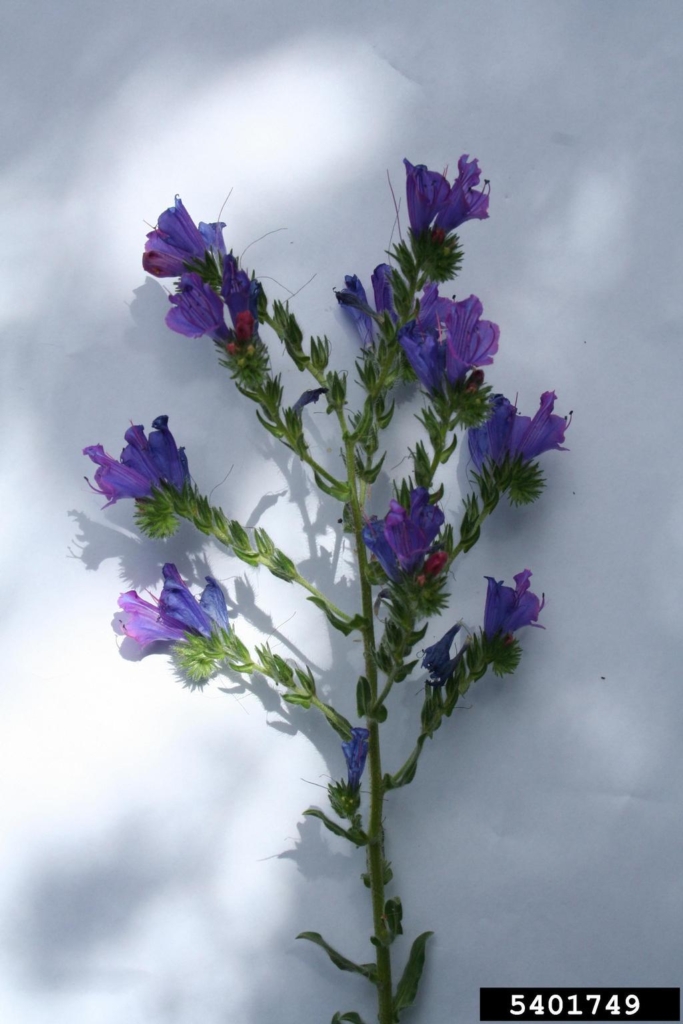Paterson’s Curse
Echium plantagineum
Plant Description
Paterson’s curse is an erect 1-3 feet tall annual or biennial herb. Plants are often multi-branched with fuzzy appearance; an abundance of stout bristly hairs cover the leaves and stems. Flower heads are curled in the shape of a fiddleneck. Flowers have five petals,
most often blue-purple in color turning to pink when mature.
Plant Details
| Life Forms | |
|---|---|
| Habitats | |
| ODA Listing | |
| Soil and Moisture Conditions | |
| Suggested Actions | |
| Shade Preference | |
| Mature Height | 8"-6'' |
| Distribution | Linn and Douglas Counties. Isolated infestation less than 640 acres, more than 10 acres |
| Control | If found, report to OregonInvasivesHotline.org. Herbicides generally required, or intensive management practices. Grazing and mowing can reduce plant size but seed production often is unaffected due to late season regrowth (Grigulis et. al. 2001). Mowed plants regrow and set seed even in very dry soils. Several growth regulator type herbicides are effective at controlling seedlings and rosettes though later season growth is very resistant to herbicide effects. In rangeland, control costs can often exceed the value of the forage produced. |
| Reproduction and Spread | Many seeds, spreads quickly by vehicles or animals. Reproduces and spreads by seed which attaches to fur and clothing. Used in wildflower seed mixes and may be spread by unaware gardeners. Tolerant of both wet and dry sites, it is especially adapted to drought conditions and is able to take advantage of limited moisture to produce rapid growth. |
| Introduced | 2003 into Linn County |
| Look Alikes | Borage (aka Salvation Jane) |
| Impact | Paterson's curse is poisonous to grazing animals and is a threat to natural areas. This weed contains pyrrolizidine alkaloids that cause chronic liver damage and death to susceptible animals. This invader is a prolific seed producer enabling rapid spread and displacement of pasture, range, and desirable plants. It is a threat to native habitat with the potential to invade oak woodland, native prairie, and dry upland slopes. Handling plants can cause mild to severe skin irritation and hay fever in some individuals. |
| More Info |
© Marion Soil and Water Conservation District. All Rights Reserved.

